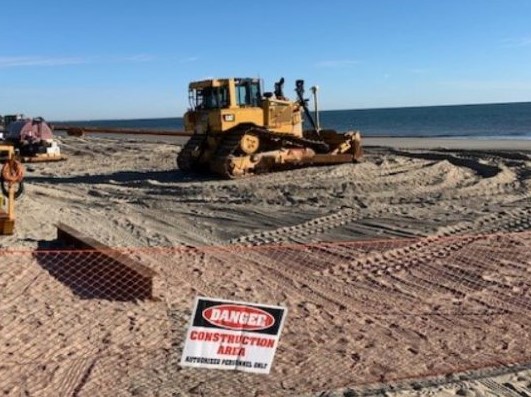Shore Protect Team - Truths
Wiki Article
Getting The Shore Protect Team To Work
Table of ContentsFascination About Shore Protect Team9 Easy Facts About Shore Protect Team ExplainedSome Known Details About Shore Protect Team The 8-Minute Rule for Shore Protect TeamShore Protect Team Fundamentals ExplainedThe Single Strategy To Use For Shore Protect Team7 Simple Techniques For Shore Protect Team
Decrease in residential or commercial property worth: As the location tourism is affected by erosion, so after that is the economic climate. Customers are less most likely to look for a beach home that can be damaged anytime by the impending flooding and erosion emergency. Consequently, home value can go down exceptionally and impact the whole area.Whether a coastline is just small and jampacked or has to shut totally for the safety and security of the environment and neighboring properties, this considerably influences tourism. In turn, neighborhood economic climates are affected (https://www.reverbnation.com/artist/shoreprotectteam). Risk of injury: The increased threat of flooding and architectural failures triggers an enhanced threat of injury to close-by visitors and neighborhood members

Shoreline stabilization is directly relevant to their work. Beachfront hotels: Because coastline erosion influences tourism, it impacts the success of waterfront hotels.
Not known Details About Shore Protect Team
Coastal business businesses: No tourists indicates no service. Coastal state parks: State parks that exist along coastlines are at threat of damage.Soft stabilization is a better remedy for the atmosphere and even more lasting overall. Hard stabilization utilizes man-made frameworks as defense to regulate erosion. Usually, these frameworks are installed at ideal angles or parallel to quit sand activity and reduce the force of waves. A lot of types of hard stablizing like seawalls and sheet metal are not perfect for shoreline stabilization.
Shore Protect Team - Questions
There's additionally insufficient evidence of their efficiency depending upon the sort of coastline and local conditions. Tough stabilization techniques tend to be much more difficult to install and don't match the all-natural visual, protruding like a sore thumb and damaging neighborhood ecological communities in numerous circumstances. Coastline nutrients is the process of adding lost sand and sediment back to beaches after erosion has actually taken place.TrapBags help in the procedure of beach nourishment by securing natural communities and allowing plants to grow. While this process can be pricey and is not permanent, the pros have a tendency to surpass the disadvantages. TrapBag barriers deal lots of properties that make them suitable for coastal and riverbank disintegration security. They're: Eco-friendly: You can make use of indigenous soil both to border and to fill up the TrapBags.

The Buzz on Shore Protect Team
Easy to mount: Alleviate of installation suggests TrapBags can be released promptly in the event of an emergency. They can additionally be mounted without any hefty machinery. Budget friendly: TrapBags are optimal for both small and big areas of shoreline. They provide an economical remedy to cover tasks of any kind of dimension.The proper seawall style depends on location-specific aspects, consisting of surrounding erosion processes. There are 3 primary types of seawalls: vertical, bent, tipped, and piles (see table below). A report published by the United Nations Setting Program (UNEP) recommends that the tsunami of 26 December 2004 triggered less damages in the locations where all-natural obstacles were existing, such as mangroves, coral reefs or coastal plants.
Natural barriers, such as reef and mangrove forests, prevent the spread of tidal waves and the circulation of coastal waters and minimized the flood and rise of water. A cost-benefit strategy is a reliable method to identify whether a seawall is appropriate and whether the advantages deserve the expenditure.
Shore Protect Team Fundamentals Explained
A seawall is a fixed function which can contravene the vibrant nature of the shore and impede the exchange of sediment between land and sea. The table listed below summarizes some favorable and negative effects of seawalls which can be used when comparing their performance with various other coastal monitoring choices, such as beach nutrients. [] Advantages and downsides of seawalls according to Short (1999) Benefits Disadvantages Lengthy term service in contrast to soft beach nutrition.
This can create coastlines to dissipate, providing them worthless for coastline goers. Usually, seawalls can be an effective way to manage coastal disintegration, but just if they are created well and out of products that can stand up to the force of ongoing wave power. Some understanding is required of the coastal processes and morphodynamics specific to the seawall place.
Everything about Shore Protect Team
The proper seawall layout counts on location-specific aspects, consisting of bordering disintegration procedures. There are 3 primary kinds of seawalls: vertical, curved, tipped, and mounds (see table below). A record published by the United Nations Setting Programme (UNEP) recommends that the tsunami of 26 December 2004 caused much less damages in the locations where natural barriers were present, such as mangroves, reef or seaside greenery.Natural obstacles, such as reef and mangrove woodlands, avoid the spread of tidal waves and the flow of seaside waters and mitigated the flooding and rise of water. A cost-benefit technique is an effective method to determine whether a seawall is ideal and whether the benefits are worth the expenditure.
About Shore Protect Team
A seawall is a static function which can clash with the vibrant nature of the shore and impede the exchange of sediment in between land and sea. Benefits and downsides of seawalls according to Short (1999) Advantages Drawbacks Lengthy term service in comparison to soft coastline sustenance.
This can cause beaches to dissipate, providing them worthless for beach goers. Normally, seawalls can be a successful means to control coastal erosion, but only if they are constructed well and out of materials that can withstand the force of ongoing wave energy.
Report this wiki page